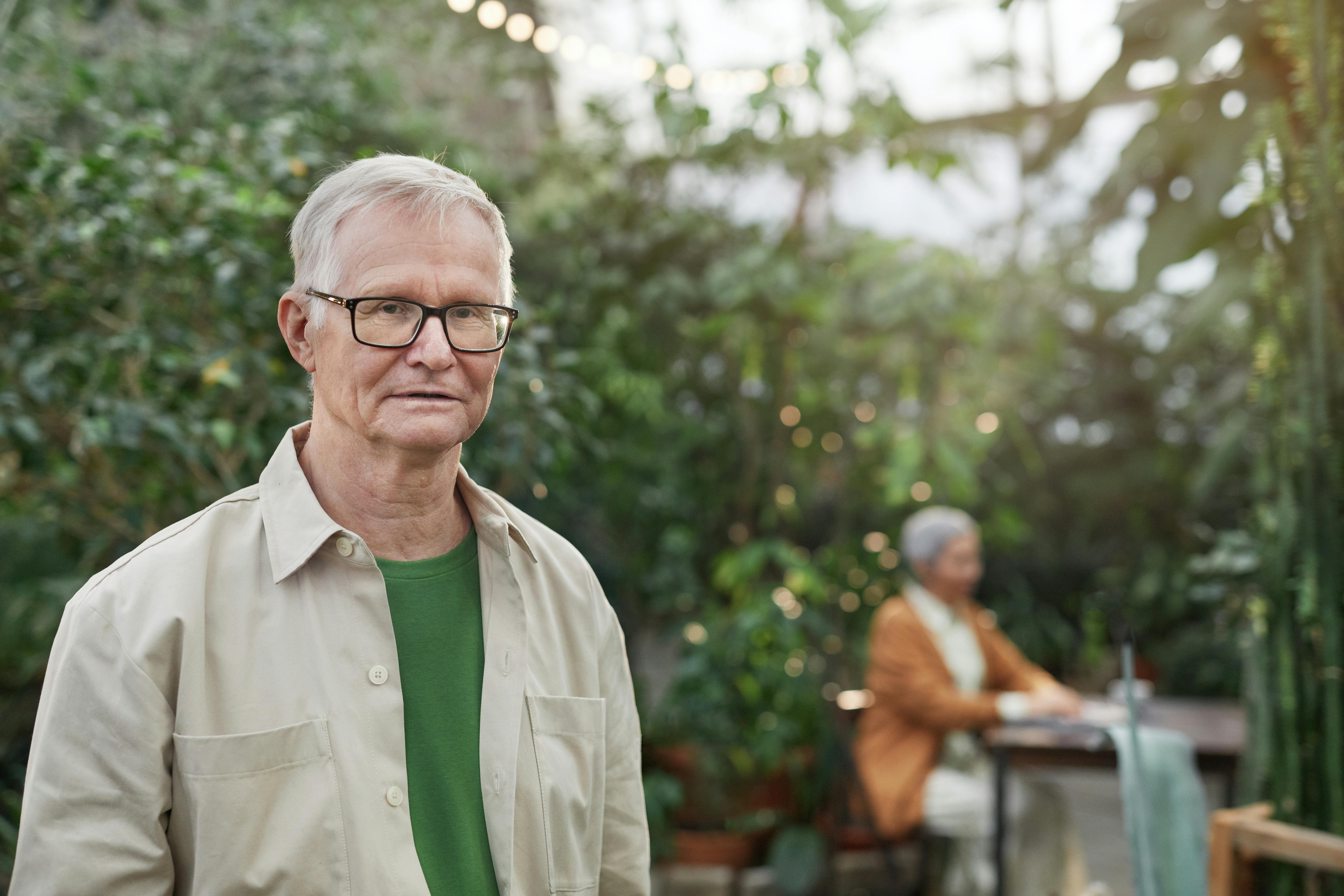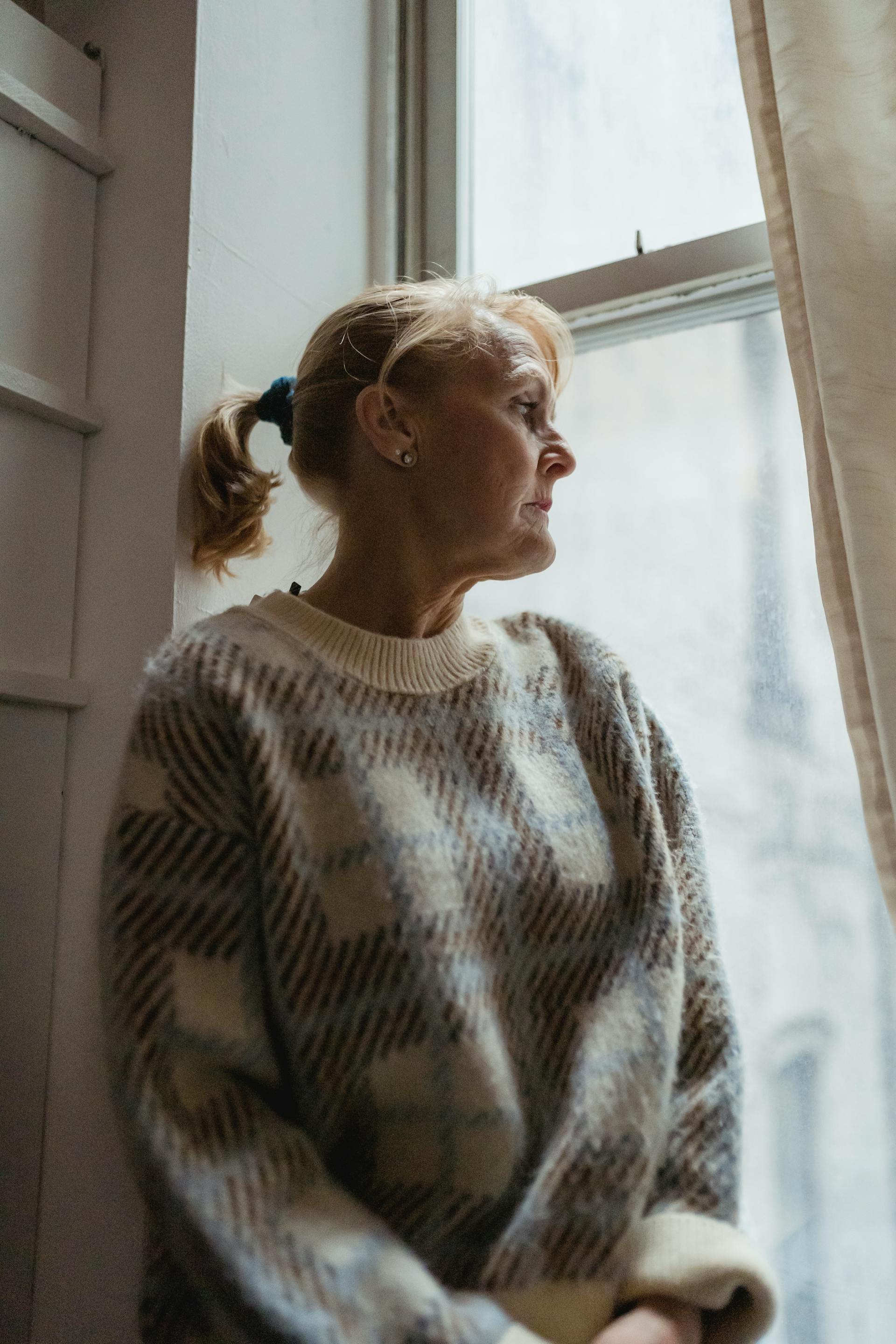Walking is one of the easiest yet most effective forms of exercise. Almost anyone can do it, and it offers numerous health benefits. Whether it’s a quick 10-minute walk or hitting 10,000 steps a day, getting outside and moving can significantly improve your overall health. Here are 15 ways daily walking benefits your body, based on expert insights:
1. Boosts Mood and Reduces Stress

Walking has been proven to enhance mood. Even a short 10-minute walk can lift your spirits, reduce feelings of anger, and alleviate symptoms of depression. Walking in nature enhances these effects, helping calm your nervous system and lower stress levels. Walking with friends or loved ones strengthens social bonds, further boosting happiness and reducing loneliness.
2. Increases Calorie Burn and Helps Maintain a Healthy Weight

Daily walks can aid in weight management by burning calories and boosting metabolism. Interval walking, alternating between brisk and leisurely paces, is especially effective for burning calories and reducing body fat, particularly around the abdomen. Walking uphill or choosing varied routes can enhance these benefits.
3. Improves Heart Health
Regular walking helps lower blood pressure and reduces the risk of heart disease and stroke. For every 1,000 steps, systolic blood pressure may drop by 0.45 points. Studies show that consistent walking can reduce the risk of cardiovascular events by up to 30% when done according to physical activity guidelines.
4. Reduces the Risk of Chronic Diseases

Research shows that walking can lower the risk of chronic conditions like type 2 diabetes, hypertension, and obesity. A 2022 study found that walking 8,200 steps daily reduces the risk of diseases such as major depressive disorder and GERD. Even short post-meal walks help regulate blood sugar, preventing type 2 diabetes.
5. Improves Sleep Quality
Consistent walking can improve the quality of sleep and help you fall asleep faster. Walking boosts melatonin production, the hormone responsible for regulating sleep. Many postmenopausal women and others who walk daily report better sleep quality compared to those who lead sedentary lifestyles.
6. Enhances Cognitive Function and Memory
Walking enhances cognitive abilities, particularly in older adults. Studies indicate that brisk walking for an hour, three times a week, improves brain function related to decision-making. Increased blood flow to the brain during exercise is believed to boost memory and protect against cognitive decline.
7. Relieves Joint Pain
Walking helps ease joint pain by improving circulation and lubricating the joints. It’s particularly beneficial for individuals with arthritis, as it promotes mobility and reduces discomfort.
8. Slows the Development of Varicose Veins
Regular walking strengthens the circulatory system, which helps prevent the formation and worsening of varicose veins by improving blood flow in the legs.
9. Improves Digestive Health
Walking stimulates the core and abdominal muscles, aiding digestion. It promotes the movement of food through the digestive tract and can relieve bloating and constipation. Many doctors recommend walking post-surgery to help with recovery and digestion.
10. Strengthens the Immune System
Daily walking boosts your immune system by increasing the circulation of immune cells, which helps your body fight off infections and illnesses more effectively.
11. Strengthens Bones and Prevents Bone Loss
Walking helps maintain bone density, reducing the risk of osteoporosis and fractures. Studies show that walking for at least 30 minutes a day can slow bone loss, particularly in postmenopausal women.
12. Sparks Creativity
Walking has been linked to increased creativity. Studies suggest that walking, particularly in nature, can enhance creative thinking and problem-solving abilities by clearing the mind and reducing mental fatigue.
13. Encourages Other Healthy Habits
Establishing a daily walking routine often leads to the development of other healthy habits. The sense of accomplishment from walking regularly can motivate you to set and achieve other health goals, such as eating better or trying new exercises.
14. Promotes Healthy Aging
Walking not only improves current health but also supports healthy aging. Studies show that even moderate physical activity can reduce the risk of mortality by up to 31% in those who meet physical activity recommendations. Faster walking speeds are associated with even greater reductions in mortality risk.
15. Extends Lifespan
Research indicates that regular walking can contribute to a longer life. By improving cardiovascular health, maintaining a healthy weight, and reducing the risk of chronic diseases, walking can help you live a longer, healthier life.
Conclusion
Walking is a simple and accessible way to improve your physical and mental health. From enhancing brain function to reducing the risk of chronic diseases, it offers a wide range of benefits that can help you lead a longer, healthier life.
My Husband Visited Our Older Neighbor Daily to Help Her with Chores Until I Found Women’s Underwear in His Pocket


When I found a pair of women’s underwear in my husband’s pocket, my world turned upside down. What started as innocent help for our elderly neighbor spiraled into a web of suspicion, secrets, and a mysterious young woman I never saw coming.
Chris and I have been married for ten years. We live in a quiet suburban neighborhood, the kind of place where everyone knows each other, and nothing much ever happens. It’s peaceful. It’s safe. We’ve built a simple life here.

A happy couple | Source: Pexels
Our next-door neighbor, Mrs. Wilson, is like family. She’s a sweet woman in her 60s, and she lives alone. She’s had some health issues lately, so Chris started helping her with little things around the house. At first, it was just simple stuff.
“Chris, could you fix the leaky faucet?” Mrs. Wilson would ask. Or “Can you help me move this chair?”

A smiling elderly woman | Source: Pexels
Chris never minded. He’s always been the helpful type. And Mrs. Wilson, well, she’s been like a grandmother to everyone on the block. So, I didn’t think much of it. It was normal for him to lend her a hand. It felt good to know we were helping someone who needed it.
But after a few weeks, things started to change. Chris was spending more and more time over there. What used to be a quick trip to fix something turned into hours. Sometimes, he’d be gone half the day.

A thoughtful woman | Source: Pexels
One afternoon, I asked him, “What’s taking so long over there?”
He looked a little surprised by my question. “Oh, Mrs. Wilson just needed some extra help today. We ended up talking for a while. She’s lonely, you know.”
It made sense, I guess. She didn’t have anyone else to talk to. But still, something didn’t feel right. I couldn’t shake the feeling that there was more to it. I didn’t say anything, though. I didn’t want to seem paranoid.

A mature woman with her husband | Source: Pexels
Then, a week later, I found something that made my heart stop.
I was doing laundry, emptying Chris’ pockets like I always do, when I pulled out a pair of women’s underwear. Lacy, small — definitely not mine. My hands trembled as I held them. My mind raced. Where did these come from? Why did Chris have them? My stomach twisted into knots as a thousand horrible thoughts flashed through my head.

Women’s underwear | Source: Unsplash
Was he cheating on me? With Mrs. Wilson? No, that couldn’t be. She was elderly and frail. It didn’t make sense. But if not her, then who?
I shoved the underwear back into his pocket, my heart pounding. I couldn’t confront him. Not yet. I needed more information. But more than anything, I needed proof.

An angry mature woman | Source: Freepik
That night, I could barely sleep. My mind kept replaying everything over and over again. Every excuse Chris had made, every long visit to Mrs. Wilson’s. Was he really helping her, or was something else going on? I didn’t know what to believe.
The next day, I decided to watch him. I needed to see for myself what was happening when he went over there.

A thoughtful, mature woman | Source: Pexels
So, when Chris left to “help Mrs. Wilson,” I waited about thirty minutes. Then, I quietly slipped out the back door, making my way through the yard, my heart racing in my chest. I felt ridiculous, sneaking around like this, but I had to know the truth.
When I reached Mrs. Wilson’s house, I crouched low by the window. I could hear voices inside, but I couldn’t make out what they were saying. Slowly, I raised myself up just enough to peek inside.

A woman crouching near a window | Source: Midjourney
And that’s when I saw her.
There, lounging on the couch in a lacy robe, was a young woman. She was much younger than Mrs. Wilson, maybe in her twenties. She looked so comfortable, so at home. My heart nearly stopped. Who was she? And why was she in Mrs. Wilson’s house?

A woman in a robe | Source: Pexels
My mind jumped to the worst possible conclusion. Had Chris been sneaking around with this woman? Was this the real reason he was spending so much time there? I felt sick.
I ducked back down, my head spinning. I couldn’t stay there any longer. I needed answers, but I wasn’t sure I could handle them.

A shocked and upset woman standing near the window | Source: Midjourney
That night, I couldn’t keep it inside anymore. As soon as Chris walked through the door, I felt my heart racing. I had to know the truth, even if it tore me apart.
“We need to talk,” I said, my voice sharper than I intended. I stood in the kitchen, gripping the counter.
Chris looked at me, confused. “What’s going on?”

A confused, mature man | Source: Pexels
I reached into my pocket, pulling out the lacy underwear I had found in his jeans. “I found this.”
His face went pale. For a moment, neither of us spoke. I could feel the tension crackling in the air between us.
“Why,” I continued, my voice trembling, “do you have another woman’s underwear in your pocket? And who is the woman I saw at Mrs. Wilson’s house today? The one in the robe?”

An angry woman | Source: Pexels
Chris blinked, and for a second, I thought he might deny everything. But then he sighed, rubbing his face with his hands.
“Okay, I can explain,” he said, his voice quiet. “Just… let me explain.”
I folded my arms, waiting. My heart was pounding in my chest.

A mature man talking | Source: Pexels
“The woman you saw… that’s Amy. She’s Mrs. Wilson’s granddaughter,” Chris began, his eyes searching mine for any sign of belief. “She moved in a few weeks ago to help take care of her. Mrs. Wilson’s health has been getting worse, and Amy’s been staying with her to help out.”
I frowned. “Then why didn’t you tell me? Why was she lounging around in a robe like she owned the place? And the underwear — how do you explain that?”

A woman lounging in a bathrobe | Source: Pexels
Chris looked pained, running his hand through his hair. “I didn’t tell you because… well, I knew how it might look. I didn’t want you to get the wrong idea, but obviously that backfired. As for the underwear, Mrs. Wilson asked if I could throw Amy’s laundry in with ours since I was already helping around the house.”
I stared at him, unsure what to think. His explanation made sense, but it also felt like it left too many gaps. Why hadn’t he just told me about Amy from the start? Why was he over there so much?

An angry woman with her arms folded | Source: Midjourney
“Chris, I feel like you’ve been hiding things from me,” I said, my voice soft but strained. “You’ve been spending so much time there, and I’ve felt like you’re pulling away. I didn’t know what to think.”
Chris reached out, taking my hands. “I swear, nothing’s going on. I’m just trying to help out. I didn’t mean to make you feel this way, and I’m so sorry I didn’t explain things sooner. I should have.”

Holding hands | Source: Unsplash
I pulled my hands back, biting my lip. I wanted to believe him. But could I?
The next day, I decided to go straight to the source. I needed to hear it from Mrs. Wilson herself. I walked over to her house, feeling a knot of nerves tightening in my stomach. What if Chris wasn’t telling the truth? What if this was something more?

An angry woman on the porch | Source: Midjourney
When I knocked on the door, Mrs. Wilson answered with her usual warm smile. “Oh, dear, come on in,” she said, opening the door wide. Her frail frame moved slowly as she led me into the living room.
Amy was sitting on the couch, but this time, she was dressed in jeans and a T-shirt. She looked up in surprise when she saw me.

A surprised young woman | Source: Pexels
“Hi,” I said, trying to sound casual, though I felt anything but. “I just… wanted to clear something up.”
Mrs. Wilson sat down in her armchair, looking from me to Amy, clearly sensing my unease. “What’s on your mind, dear?”
I took a deep breath and explained everything: how I’d found the underwear, how I’d seen Amy lounging around in a robe, and how Chris had been spending so much time in their home without telling me about Amy.

An elderly woman talking to her friend | Source: Pexels
Amy’s eyes widened, and she immediately shook her head. “Oh, no! I’m so sorry. I had no idea Chris didn’t tell you about me. I’ve been staying here to help Grandma, and he’s been such a huge help. I didn’t mean for anything to seem weird.”
Mrs. Wilson nodded. “Chris has been a godsend, really. I didn’t want to burden him, but he’s been insistent on helping with everything.”

A smiling elderly woman looking out of her window | Source: Pexels
I felt a bit of relief wash over me, but there was still a part of me that wasn’t entirely convinced. I smiled politely, trying to hide my lingering doubt.
“I’m glad to hear that,” I said, my voice tight. “I guess I just misunderstood.”
Later that evening, I called my sister. She had always been the one to give it to me straight, even when I didn’t want to hear it.

A middle-aged woman on her phone | Source: Pexels
After I explained everything, there was a long pause on the other end of the phone.
“Listen,” my sister finally said, her voice serious. “I don’t want to make you paranoid, but are you sure Mrs. Wilson doesn’t have her own agenda?”
I blinked, stunned by the thought. “You think she’s trying to push them together?”

A woman talking on her phone | Source: Pexels
“It wouldn’t be the first time an older woman played matchmaker,” my sister said. “Look, I’m not saying Chris is doing anything wrong. But Mrs. Wilson might be trying to stir the pot, and you don’t want to be blindsided. Just keep an eye on things.”
Her words left me feeling more confused than ever. Was there something more going on, or was I letting my imagination run wild again?

A thoughtful woman | Source: Pexels
I hung up the phone, staring at the wall. I wasn’t sure what to believe anymore. All I knew was that I couldn’t shake the feeling that something wasn’t quite right.
The next day, I decided to stop playing games and talk to Mrs. Wilson directly. If there was anyone who could give me the answers I needed, it was her. I marched over to her house, heart pounding, determined to get to the bottom of whatever was going on.

A wistful middle-aged woman looking out the window | Source: Midjourney
When she opened the door, she greeted me with her usual warm smile. “Oh, dear. It’s you again! Come on in. What’s on your mind?” she asked, her voice full of concern.
I stepped inside, trying to stay calm. “Mrs. Wilson, I’m not sure what to think, but I feel like something’s going on that I need to know about. Something that you didn’t tell me about the last time we talked.”

A curious middle-aged woman is looking at someone | Source: Midjourney
Her smile didn’t falter, but there was a flicker in her eyes — something that made me uneasy. She led me into the living room and gestured for me to sit. I remained standing.
“Well, dear, like I said before, there’s nothing to worry about,” she began. “Chris has been such a blessing to me, helping out around the house. And Amy, well, she’s been staying with me to take care of things I can’t manage.”

A young woman walking in a room | Source: Pexels
“But why does it feel like there’s something more happening here?” I couldn’t help but ask.
Mrs. Wilson sighed, her gaze softening as if she pitied me. “You’re a smart girl. I suppose there’s no point in hiding it anymore.”

An elderly woman smiling | Source: Pexels
My heart skipped a beat. “Hiding what?” I demanded, my voice rising.
She leaned back in her chair, her expression cool and calculated. “I’ve watched Chris for years. He’s a wonderful man, a provider, a hard worker. You’re lucky to have him, but you see… not everyone is as fortunate as you. Amy’s young, beautiful, and she deserves a man like Chris — someone who can take care of her, provide for her in the way she deserves.”
I stood there, frozen in shock. “You were trying to set him up with your granddaughter?”

A shocked middle-aged woman | Source: Midjourney
Mrs. Wilson didn’t flinch. “Amy needs a good man, and Chris… well, sometimes men can be tempted, especially by someone younger and more… suitable for their needs. I thought maybe he’d see how much better his life could be with her.”
I felt the room spin around me. This seemingly sweet, grandmotherly woman had been plotting to break up my marriage, using her granddaughter as bait. The realization hit me like a punch to the gut.
“You’re insane,” I spat, my voice trembling with anger. “Chris loves me. He would never—”

A happy middle-aged couple | Source: Pexels
Mrs. Wilson raised a brow, her voice cool. “Men don’t always make the right choices, dear. I just thought I’d give him an opportunity. It’s up to him, of course.”
I stormed out of the house, my mind racing. How could she do this? How could she think she could manipulate Chris like that?
When I got home, I told Chris everything — Mrs. Wilson’s confession and her twisted plan to push him toward Amy. He looked horrified.

A horrified middle-aged man | Source: Midjourney
“I had no idea she was doing that,” he said, shaking his head. “I thought I was just helping her. I swear, nothing’s been going on. I love you, and I’d never do anything to hurt you.”
Tears filled my eyes as I realized the depth of Mrs. Wilson’s betrayal. But Chris’ sincerity broke through my fear. I believed him.
We decided to cut all ties with Mrs. Wilson. Chris stopped going over to help her, and we made sure Amy knew exactly what her grandmother had been trying to pull.

A grayscale photo of a surprised young woman | Source: Pexels
Amy, to my surprise, was just as disgusted as we were. She apologized profusely, saying she had no idea what her grandmother had been planning.
A few weeks later, I heard from a neighbor that Mrs. Wilson had fallen ill and moved into a care home. She wouldn’t be meddling in anyone’s life anymore.
Looking back, I’m grateful that I trusted my instincts and confronted the situation head-on. Mrs. Wilson’s plan backfired, and in the end, her manipulation drove her away from the life she thought she could control. Karma, it seems, has a way of working things out.

A sad, frail, and lonely elderly lady | Source: Midjourney
So yeah, readers, my elderly neighbor was trying to woo my husband for her granddaughter. It almost tore me apart, but in the end, I found out the truth and shut it down. Some people just can’t resist stirring trouble — but thankfully, karma has a way of catching up with them.
This work is inspired by real events and people, but it has been fictionalized for creative purposes. Names, characters, and details have been changed to protect privacy and enhance the narrative. Any resemblance to actual persons, living or dead, or actual events is purely coincidental and not intended by the author.
The author and publisher make no claims to the accuracy of events or the portrayal of characters and are not liable for any misinterpretation. This story is provided “as is,” and any opinions expressed are those of the characters and do not reflect the views of the author or publisher.







Leave a Reply